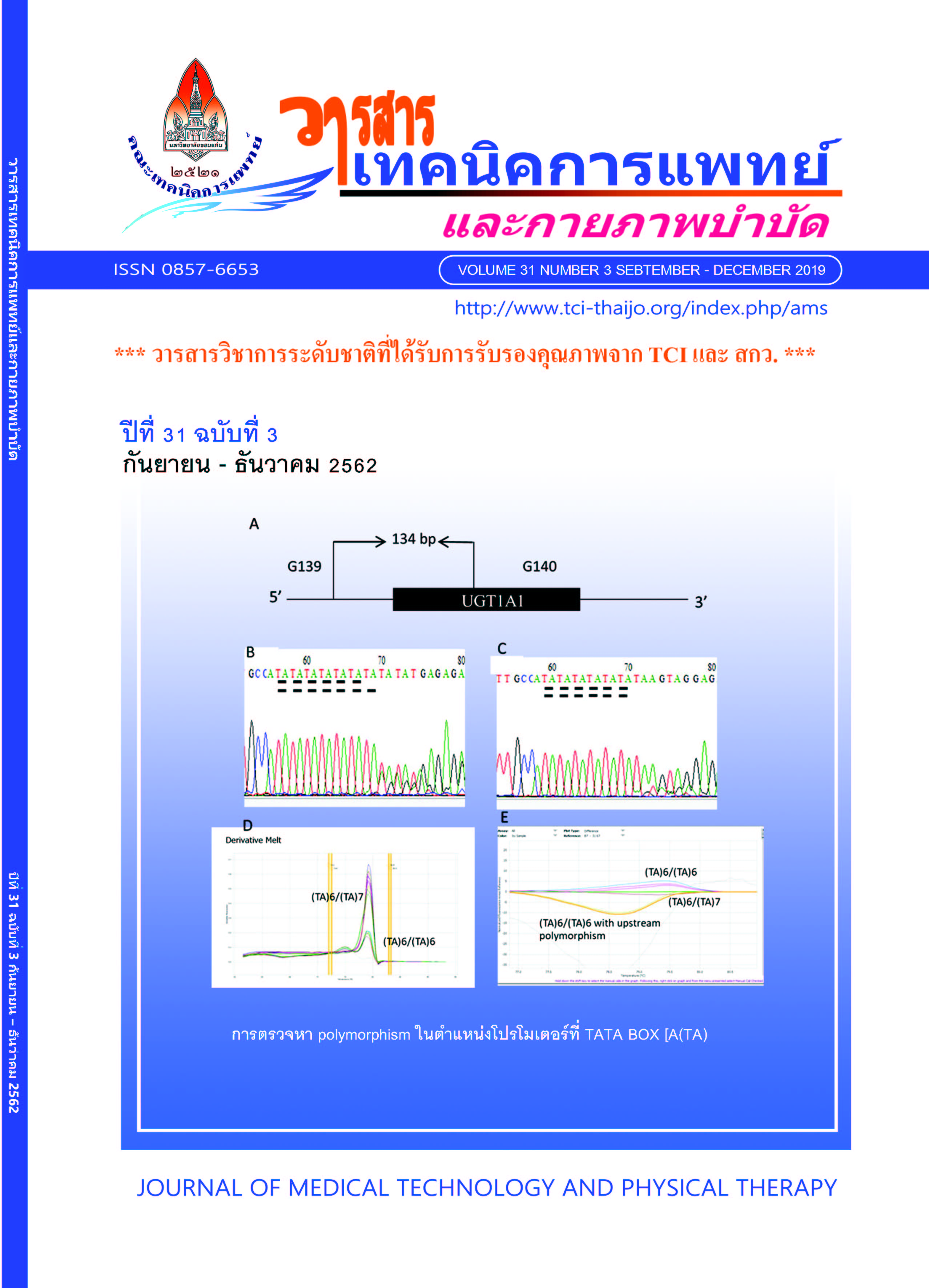Effectiveness of Inspiratory Muscle Training with A New Breathing Pattern in Elderly Patients with Chronic Obstructive Pulmonary Disease
Main Article Content
Abstract
Chronic Obstructive pulmonary disease (COPD) is a chronic inflammatory airway disease with the common problem of premature airway closure. This leads to lung hyperinflation at rest and during exercise and inspiratory muscle weakness which lead to breathlessness, poor physical performance and exercise intolerance. The efficacy of inspiratory muscle training (IMT) is still controversial, possibly because the pattern of breathing during training is not generally controlled, but IMT with a breathing pattern that reduces airway closure and targets weak inspiratory muscles, may be effective. The present study, therefore, investigated the efficacy of IMT with a new breathing pattern, suitable for COPD, involving low load and a slow breathing rate with pursed lip expiration. The study included 18 male COPD patients with mild–moderate severity, randomly divided into Slow Loaded Breathing training (SLB, n=10) and Sham (SHAM, n=8) groups. The SLB performed inspiratory muscle training with a new breathing pattern emphasizing diaphragmatic and lower costal breathing, against 30% of maximum inspiratory pressure (MIP) using the BreatheMAX Ò device. Inspiratory time was for 3 seconds with pursed lip expiration for 7 seconds, 6 breaths/min per set, 15 sets per session with 5-10 sec rest between sets, twice a day, 7 day a week, for 8 weeks. The SHAM group performed similar breathing exercise but without load. The training was performed at home and the training sessions, breathless and other symptoms were recorded daily. The adherence to training was encouraged by regular phone calls and home visits. MIP and 6 minute walk test were measured pre- and post- training in the laboratory. There was high adherence to the training (> 80 %) without adverse symptoms. After 8 weeks of training, MIP was significantly increased by 23.9±5.20 cmH2O (31 %, p<0.01) in SLB but with no significant change in the SHAM group. 6MWD did not change in either group. In conclusion, the IMT at low load with a new breathing protocol (slow rate, diaphragmatic and lower costal breathing with pursed lip expiration) is safe and effective in improving inspiratory muscle strength but did not improve functional capacity in elderly patients with COPD.
Key words: COPD, inspiratory muscle training, pursed lips breathing, slow breathing


